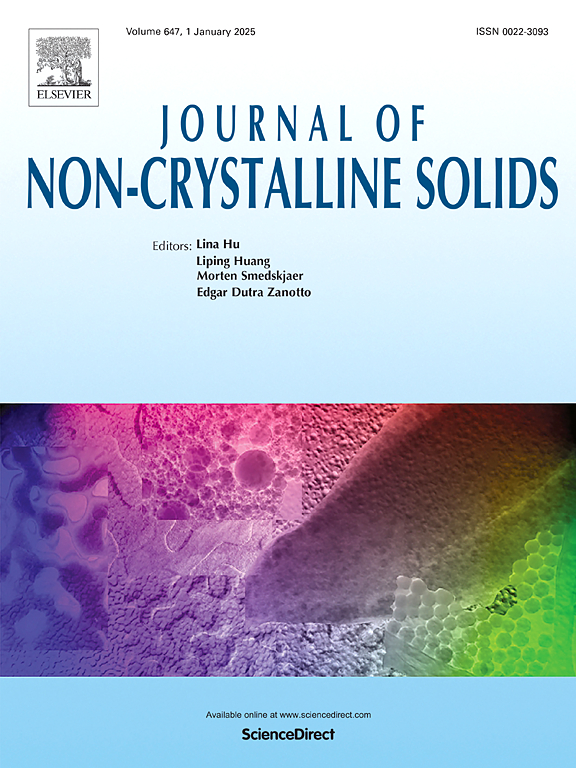CuO doping tuned structural evolution, chemical durability and antibacterial activity of zinc phosphate glasses
IF 3.5
3区 材料科学
Q1 MATERIALS SCIENCE, CERAMICS
引用次数: 0
Abstract
This work investigated the impact of small amounts of CuO on the Cu species, structure, chemical durability, and antibacterial activity of zinc phosphate glasses. Glasses with a composition of 42P2O5-30ZnO-20MgO-8Na2O (mol%) doped with 0–2.0 mol% CuO were prepared using the traditional melt-quenching method. Experimental findings indicate that doping 0.1 mol% CuO leads to the dispersion of metallic (Cu0) particles exceeding 100 nm in size within the glass. These large Cu0 particles can cause localized distortions in nearby phosphorus structural units, resulting in depolymerization of the glass network, which subsequently deteriorates the chemical durability of the glass matrix. The depolymerization process facilitates the release of zinc, which can enhance the antibacterial properties of glass against Escherichia coli. Increasing the CuO content from 0.9–2.0 mol% resulted in the formation of mono- and divalent states of Cu (Cu+ and Cu2+), which appeared to enhance cross-linking between the phosphate units and gradually improved the chemical durability.
氧化铜掺杂调整了磷酸锌玻璃的结构演变、化学耐久性和抗菌活性
本文研究了少量CuO对磷酸锌玻璃的Cu形态、结构、化学耐久性和抗菌活性的影响。采用传统熔淬法制备了42P2O5-30ZnO-20MgO-8Na2O (mol%)掺杂0-2.0 mol% CuO的玻璃。实验结果表明,在玻璃中掺杂0.1 mol%的CuO会导致尺寸超过100 nm的金属(Cu0)颗粒的分散。这些大Cu0颗粒会引起附近磷结构单元的局部扭曲,导致玻璃网络的解聚,从而降低玻璃基体的化学耐久性。解聚过程有利于锌的释放,从而提高玻璃对大肠杆菌的抗菌性能。当CuO含量从0.9 ~ 2.0 mol%增加时,Cu的单价态和二价态(Cu+和Cu2+)的形成似乎增强了磷酸盐单元之间的交联,并逐渐提高了化学耐久性。
本文章由计算机程序翻译,如有差异,请以英文原文为准。
求助全文
约1分钟内获得全文
求助全文
来源期刊

Journal of Non-crystalline Solids
工程技术-材料科学:硅酸盐
CiteScore
6.50
自引率
11.40%
发文量
576
审稿时长
35 days
期刊介绍:
The Journal of Non-Crystalline Solids publishes review articles, research papers, and Letters to the Editor on amorphous and glassy materials, including inorganic, organic, polymeric, hybrid and metallic systems. Papers on partially glassy materials, such as glass-ceramics and glass-matrix composites, and papers involving the liquid state are also included in so far as the properties of the liquid are relevant for the formation of the solid.
In all cases the papers must demonstrate both novelty and importance to the field, by way of significant advances in understanding or application of non-crystalline solids; in the case of Letters, a compelling case must also be made for expedited handling.
 求助内容:
求助内容: 应助结果提醒方式:
应助结果提醒方式:


